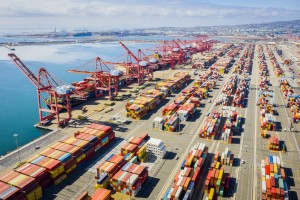COVID-19 not only caused a global healthcare crisis, but also created a global supply chain disruption. Many of us have heard about car computer chip shortages and a lack of product selections on the store shelves. This is only the tip of the iceberg for most industries. The rubber industry has also faced many challenges — polymer allocations, raw material shortages, and labor shortages have challenged the industry to keep producing quality rubber seals and gaskets.
Rubber Raw Ingredients
There are only a few ingredients that are blended together to create a polymer for plastics. However, rubber may contain between 10 and 20 different ingredients. This means that just one raw material shortage can cause major disruptions.
A large polycarbonate manufacturing shutdown in Texas caused major supply issues in the plastic industry, amplified by the fact that many medical products are made with polycarbonate.
In rubber, we are also seeing polymer allocations on Silicone (SL) and Fluorocarbon polymers (FKM). Polymer allocations have not yet improved and may continue to worsen through the second half of next year. This means that a given company may only receive half of the polymer they need each month, preventing them from making or shipping their products.
This October at the Rubber Expo in Pittsburgh, the new crisis identified was a shortage of a raw material that is used to make HCR Silicone. In the US, a lot of HCR silicone is used in medical and automotive applications, especially in the tubing industry.
Labor Shortages
Help wanted signs are common everywhere in our industry. In a recent Association for Rubber Products Manufacturers (ARPM) survey, 91% of the respondents said raw material availability has an impact on this, and 82% said that this results in increased lead time. At the time of the survey, only 30% of the respondents were fully staffed. 58% experienced increased turnover. 74% reported an increase in job vacancies.
One result of labor shortages is rising pay rates. 74% of respondents in the industry said they have increased their wages. With the price of raw materials increasing due to supply and increased labor cost, everything is costing more in the rubber industry.
Minimize Rubber Supply Chain Issues
It is essential to share the production forecast with your sealing solutions or rubber providers. This will help get your orders to the raw material suppliers and help assure proper allocations. “On time” does not work in these conditions. If material is ordered “just in time,” allocations may still prevent you from getting it. At this time, material orders need to be made months in advance.
Second sourcing materials is key. Many rubber molders will have a couple of options available for types of rubber that will give you the same formulations you usually use. In these cases, the only change is typically the polymer supplier.
During the first article validations, it is recommended that at least two of your materials get approved. This rarely requires a tool change, so the different compounds can be run through the same tool. In most cases, you won’t have to change the primary material, but in cases of unforeseen circumstances, the secondary material can be run.
Now is a great time to update your change procedures. Many companies use “No Change” agreements to ensure that materials and processes are not changed without notice. Even with these policies in place, there should be ways for molders to make a change if needed. One example of this would be having a product supplied from an overseas manufacturing site. However, if this site is subject to a government shutdown, no product can be shipped. If there are molding capabilities available locally, parts can continue being produced as soon as the change procedure is approved. Having such procedures in place not helps during pandemics, but during natural disasters, unexpected fires, or rolling blackouts.
Having spoken with many of the raw material suppliers at our last trade show, there seems to be a consensus that it will be at least another year before we start seeing some return to normality. Unfortunately, the higher prices in our industry are here to stay.
Looking for supply chain solutions?
Contact Apple Rubber and we’ll see how we can help.
